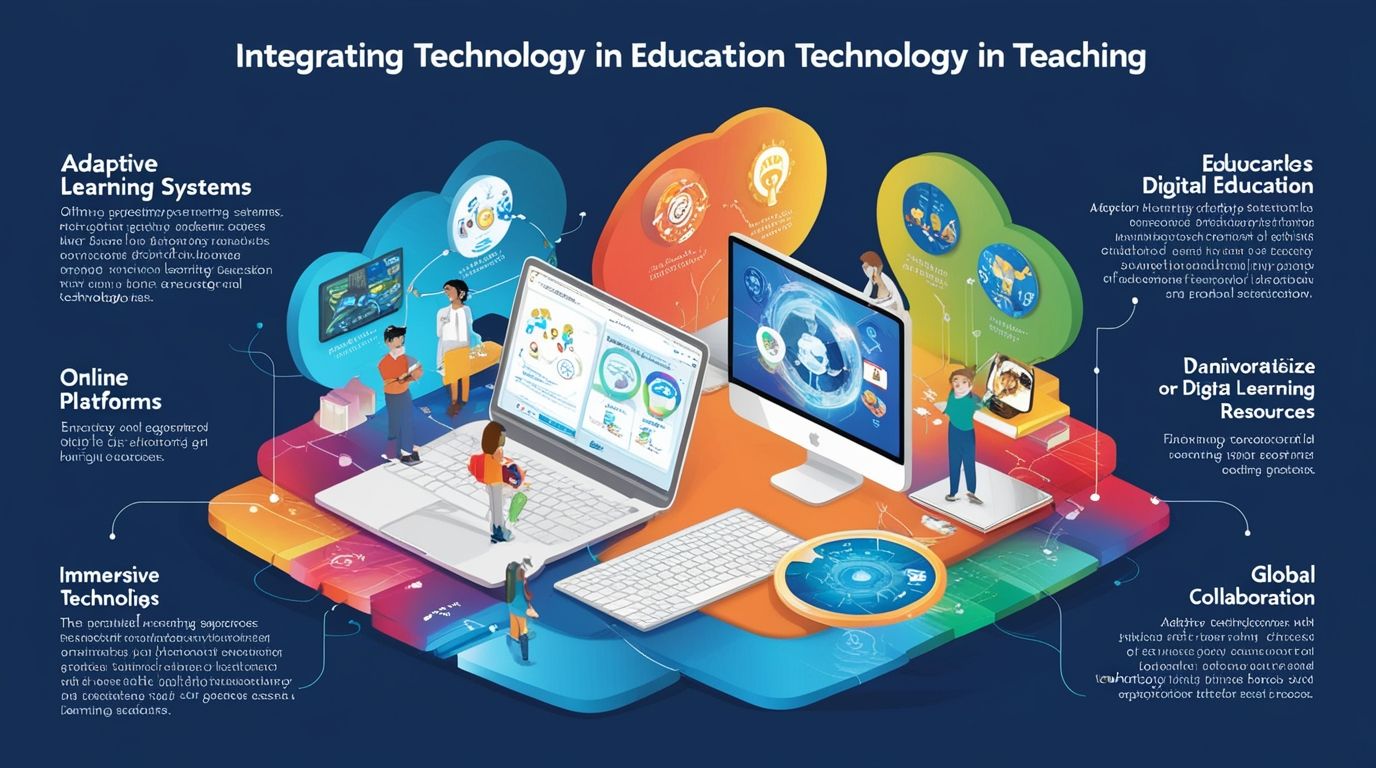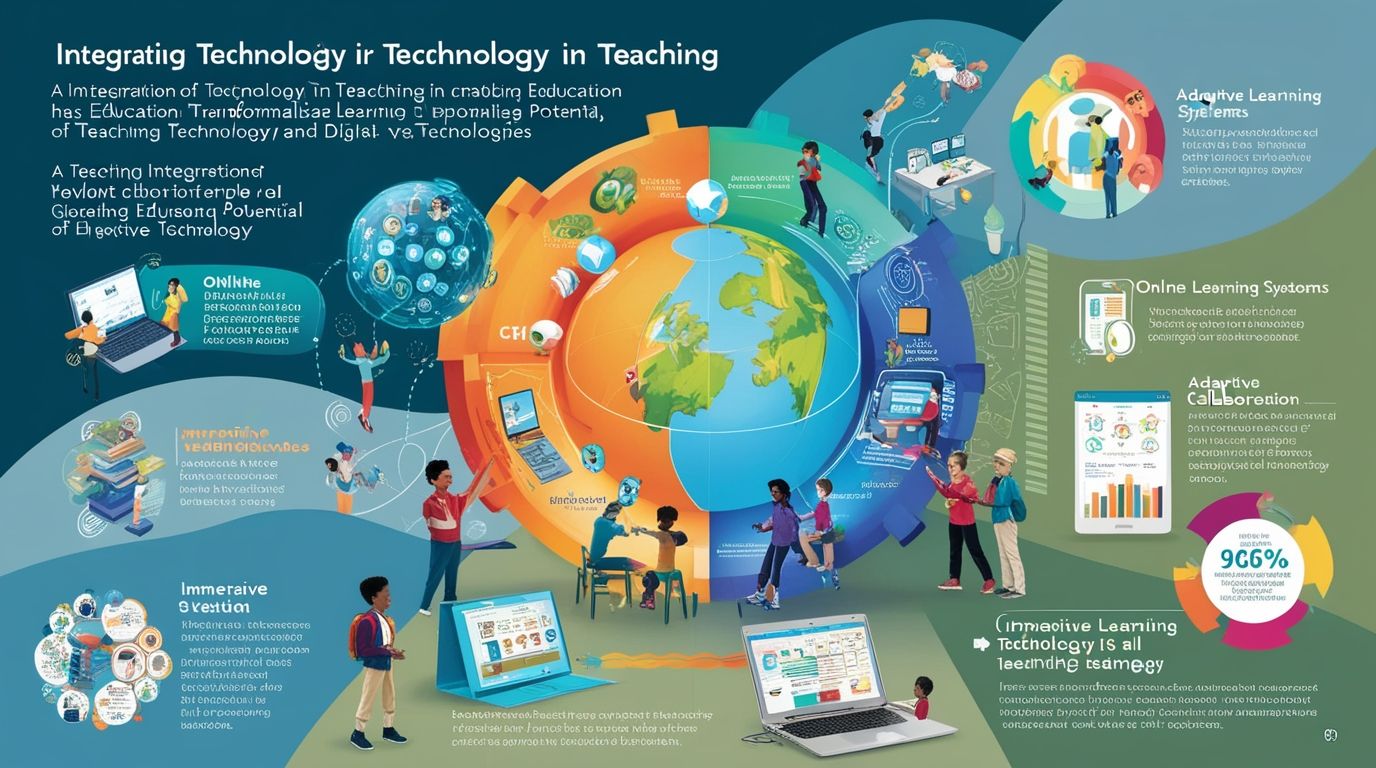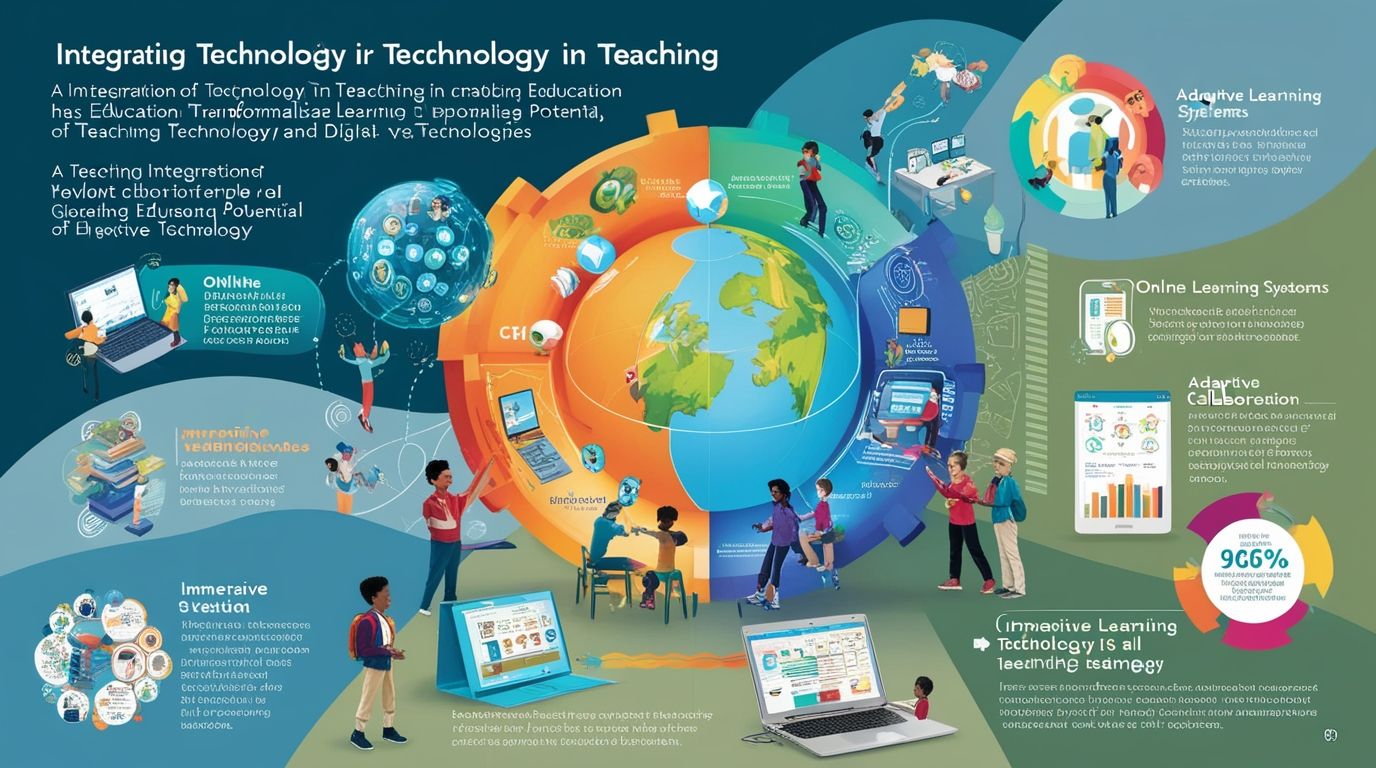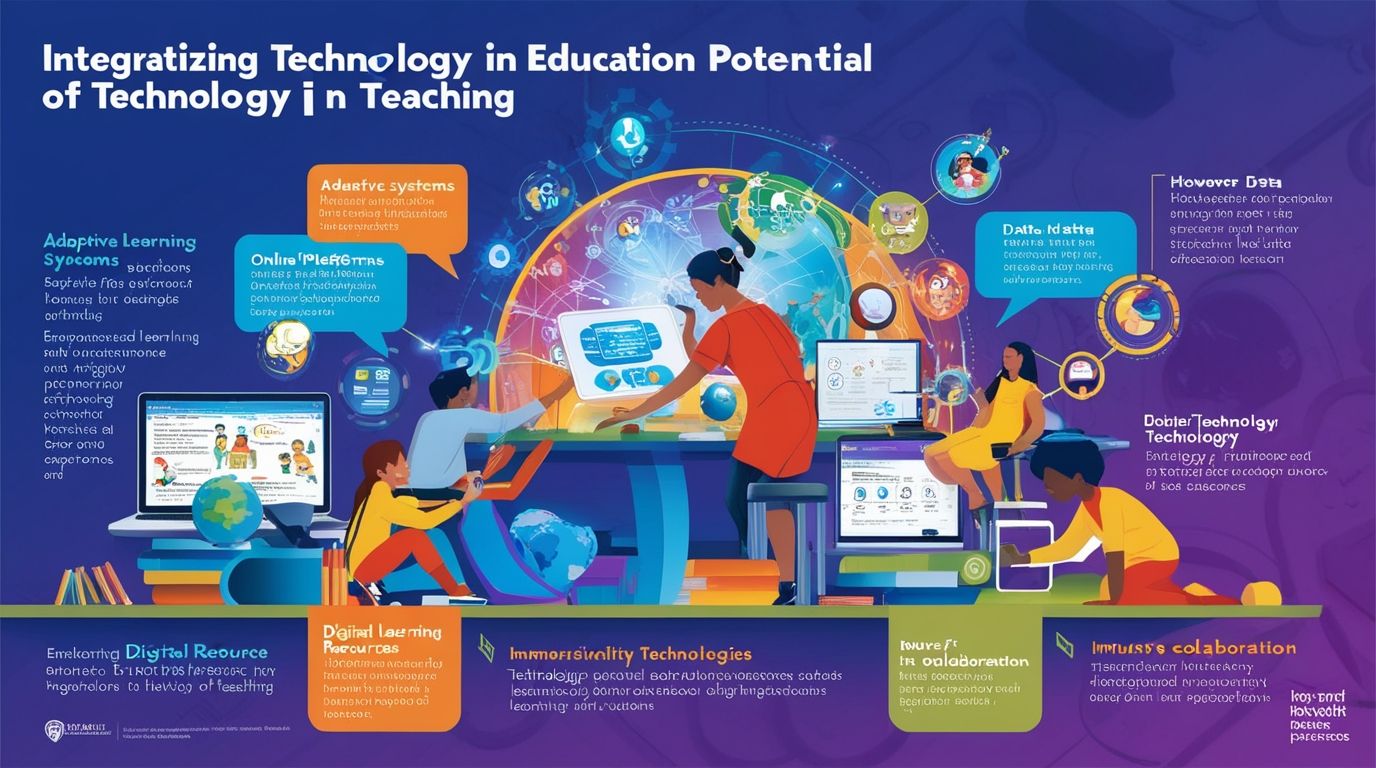The Transformative Potential of Technology in Teaching, In the past few decades, technology has fundamentally altered various aspects of our lives, and education is no exception. The integration of technology into teaching has ushered in a new era of educational transformation, offering unprecedented opportunities for personalized learning, global collaboration, and the democratization of education. This article explores the transformative potential of technology in teaching, highlighting key innovations, benefits, challenges, and the future outlook of technology-driven education.
Personalized Learning: Tailoring Education to Individual Needs
One of the most significant advantages of technology in teaching is the ability to personalize learning experiences. Traditional education often follows a one-size-fits-all approach, which can leave some students struggling while others are not sufficiently challenged. Technology, however, enables a more tailored approach.
Adaptive learning systems, powered by artificial intelligence (AI) and machine learning algorithms, can analyze a student’s performance in real-time and adjust the curriculum accordingly. These systems can identify strengths, weaknesses, and learning preferences, providing customized resources and exercises to meet individual needs. For example, if a student excels in mathematics but struggles with reading comprehension, the system can offer more challenging math problems while providing additional reading support.
Moreover, technology allows for differentiated instruction, where teachers can design lessons that cater to diverse learning styles. Visual learners can benefit from interactive videos and infographics, auditory learners from podcasts and audio books, and kinesthetic learners from hands-on simulations and virtual labs. This personalized approach not only enhances student engagement but also improves learning outcomes.

Enhancing Engagement and Motivation
Engagement is a critical factor in effective teaching, and technology offers innovative ways to capture and maintain students’ interest. Gamification, the application of game-design elements in non-game contexts, has gained popularity in education. By incorporating elements such as points, badges, leaderboards, and challenges, gamified learning environments make education fun and motivating.
For instance, platforms like Kahoot! and Quizizz allow teachers to create interactive quizzes and competitions, turning review sessions into exciting games. Educational video games, such as Minecraft: Education Edition, enable students to explore complex subjects like history, science, and mathematics in an immersive and enjoyable way. These tools not only make learning more enjoyable but also foster a sense of achievement and competition that drives students to excel.
Additionally, augmented reality (AR) and virtual reality (VR) technologies offer immersive learning experiences that can transport students to different times and places. Imagine a history lesson where students can virtually walk through ancient Rome or a biology class where they can explore the human body in 3D. These technologies provide experiential learning opportunities that traditional methods cannot match, making abstract concepts tangible and memorable.
Facilitating Collaboration and Communication
Technology has also revolutionized how students and teachers collaborate and communicate. With the advent of cloud-based tools and communication platforms, learning is no longer confined to the physical classroom. Students can collaborate on projects, share resources, and engage in discussions regardless of their geographical location.
Google Workspace for Education, for instance, provides a suite of tools that enable real-time collaboration on documents, spreadsheets, and presentations. Students can work together on group assignments, provide feedback to each other, and track changes instantly. This fosters teamwork and communication skills, preparing students for the collaborative nature of the modern workplace.
Moreover, video conferencing tools like Zoom and Microsoft Teams have become essential, especially during the COVID-19 pandemic. These platforms enable virtual classrooms, allowing teachers to deliver lessons, hold discussions, and provide one-on-one support remotely. The flexibility of online learning ensures that education can continue uninterrupted, even in challenging circumstances.

Expanding Access to Education
One of the most profound impacts of technology in teaching is its ability to democratize education. Online learning platforms and digital resources have made high-quality education accessible to a global audience, breaking down geographical and socio-economic barriers.
Massive Open Online Courses (MOOCs), offered by institutions like Coursera, edX, and Khan Academy, provide free or affordable access to courses from top universities and experts worldwide. Learners can choose from a vast array of subjects, from computer science and engineering to humanities and arts, and earn certificates that enhance their credentials.
In addition to MOOCs, open educational resources (OER) have gained traction. OERs are freely accessible, openly licensed materials that can be used for teaching, learning, and research. These resources include textbooks, lecture notes, videos, and interactive simulations, enabling educators to enhance their curriculum without incurring additional costs.
Furthermore, technology has enabled the creation of virtual schools and online degree programs, offering flexible learning options for students who may not have access to traditional education due to various constraints. This includes working professionals seeking to upskill, individuals with disabilities, and students in remote or underserved areas.
Data-Driven Decision Making
The integration of technology in teaching also brings the advantage of data-driven decision making. Educational technology platforms collect vast amounts of data on student performance, engagement, and learning behaviors. This data can provide valuable insights to educators, helping them make informed decisions about curriculum design, instructional strategies, and student support.
Learning analytics, for instance, involves the measurement, collection, analysis, and reporting of data about learners and their contexts. By analyzing this data, educators can identify trends and patterns that inform teaching practices. For example, if data shows that a significant number of students struggle with a particular concept, teachers can revisit and reinforce that topic. Additionally, predictive analytics can identify students at risk of falling behind, enabling timely interventions and support.
Challenges and Considerations
While the transformative potential of technology in teaching is immense, it is not without challenges. Addressing these challenges is crucial to ensuring the effective and equitable integration of technology in education.
Digital Divide: One of the most significant challenges is the digital divide – the gap between those who have access to technology and those who do not. Socio-economic disparities can limit access to devices, reliable internet connections, and digital literacy skills. To address this, governments and organizations must invest in infrastructure, provide affordable access to technology, and offer training programs to bridge the digital divide.
Privacy and Security: The collection and use of student data raise concerns about privacy and security. It is essential to establish robust data protection policies and ensure that educational technology platforms comply with privacy regulations. Educators and institutions must also educate students about online safety and responsible use of technology.
Teacher Training: Effective integration of technology in teaching requires teachers to be proficient in using digital tools and understanding their pedagogical applications. Professional development programs and ongoing training are essential to equip educators with the necessary skills and confidence to leverage technology effectively.
Over-Reliance on Technology: While technology offers many benefits, it is important to strike a balance and avoid over-reliance. Human interaction, critical thinking, and hands-on experiences remain vital components of education. Technology should complement, not replace, traditional teaching methods.

Future Outlook
The future of education is undoubtedly intertwined with technology. As technological advancements continue to evolve, so too will their applications in teaching. Emerging technologies such as artificial intelligence, machine learning, and blockchain have the potential to further revolutionize education.
AI and Machine Learning: AI-powered tutors and chatbots can provide personalized assistance and support to students, answering questions and offering explanations around the clock. Machine learning algorithms can analyze vast amounts of educational data to optimize curriculum design and identify effective teaching strategies.
Blockchain: Blockchain technology can enhance the transparency and security of educational credentials. Digital certificates and transcripts stored on blockchain networks are immutable and easily verifiable, reducing the risk of fraud and simplifying the process of credential verification for employers and institutions.
Augmented Reality and Virtual Reality: AR and VR technologies will continue to advance, offering even more immersive and interactive learning experiences. These technologies can transform traditional classrooms into dynamic, experiential learning environments, fostering deeper understanding and engagement.
Internet of Things (IoT): IoT devices can create smart classrooms, where sensors and connected devices collect data on student behavior, environmental conditions, and resource usage. This data can inform decisions on optimizing learning environments for better outcomes.
Conclusion
The transformative potential of technology in teaching is vast and multifaceted. From personalized learning and enhanced engagement to expanded access and data-driven decision making, technology has the power to revolutionize education. However, realizing this potential requires addressing challenges such as the digital divide, privacy concerns, and the need for teacher training.
As we look to the future, it is essential to embrace technological innovations while maintaining a balanced approach that values human interaction and critical thinking. By doing so, we can create an education system that is inclusive, adaptable, and equipped to prepare students for the ever-evolving demands of the modern world. The journey towards this future is an ongoing one, but the possibilities are boundless and the potential for positive change is immense.

wvehdo
bdmxuv
Hello, you used to write great, but the last several posts have been kinda boringK I miss your great writings. Past several posts are just a little out of track! come on!
voltyt
Informasi akses situs Sigma slot
Make mornings more adorable with this Hello Kitty alarm clock CD player. Ideal for kids and collectors alike, this charming CD clock radio includes all the basics: AM/FM radio, programmable CD playback, and reliable alarm settings. Wake up to your favorite CD or a cheerful radio station with built-in stereo sound. A large digital display and simple controls make it easy to use, even for younger users. Combining cuteness with functionality, it’s a top pick among themed alarm clocks with CD players that bring fun and joy to your space.
I will right away take hold of your rss feed as I can’t to find your email subscription hyperlink or e-newsletter service. Do you have any? Kindly allow me know so that I may just subscribe. Thanks.
But wanna comment that you have a very nice site, I enjoy the design and style it actually stands out.
Can I just say what a aid to search out somebody who truly knows what theyre speaking about on the internet. You positively know easy methods to convey a difficulty to light and make it important. More folks need to learn this and understand this aspect of the story. I cant imagine youre not more standard since you definitely have the gift.
Great blog here! Also your site loads up fast! What host are you using? Can I get your affiliate link to your host? I wish my website loaded up as fast as yours lol
Usually I don’t read post on blogs, however I would like to say that this write-up very forced me to take a look at and do so! Your writing taste has been surprised me. Thank you, very great article.
I not to mention my buddies appeared to be following the best recommendations from the blog and then all of a sudden got a horrible suspicion I had not expressed respect to the web site owner for those techniques. The young boys ended up absolutely glad to study all of them and have in effect certainly been enjoying those things. I appreciate you for genuinely quite accommodating and then for going for variety of impressive subjects most people are really desirous to be aware of. My personal sincere apologies for not expressing appreciation to you sooner.